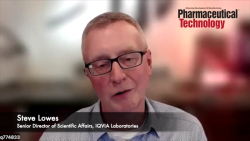
OR WAIT null SECS
- About Us
- Advertise
- Contact Us
- Editorial Info
- Editorial Advisory Board
- Do Not Sell My Personal Information
- Privacy Policy
- Terms and Conditions
© 2025 MJH Life Sciences™ , Pharmaceutical Technology - Pharma News and Development Insights. All rights reserved.
Dissolution’s Next Challenge–Nanoparticles
Nanoparticles are increasingly being used to overcome low solubility and poor permeability.
Dissolution is a crucial aspect of drug product development and characterization. It is the only pharmaceutical test which is capable of determining how a formulation will perform in a patient. Over the years, the science of dissolution has needed to adapt to advances in pharmaceuticals.
At the beginning of dissolution, medicines were primarily immediate release drugs where a United States Pharmacopeia (USP) Apparatus 1 (baskets) or 2 (paddles) worked quite well at assessing how a product would perform in vivo.
As pharmaceuticals have advanced, a wide variety of new formulations have been developed, which all need dissolution testing. Dissolution evolved to accommodate dosage forms that required extended-release times, multiple
media changes, and more. More recently, drug-device combination products
further challenged dissolution testing by needing to test extremely low volumes for several days or weeks for implants. Now, making the APIs smaller into nanoparticles is the new challenge for dissolution testing.
About the author
Ken Boda is dissolution product specialist at Agilent Technologies.


